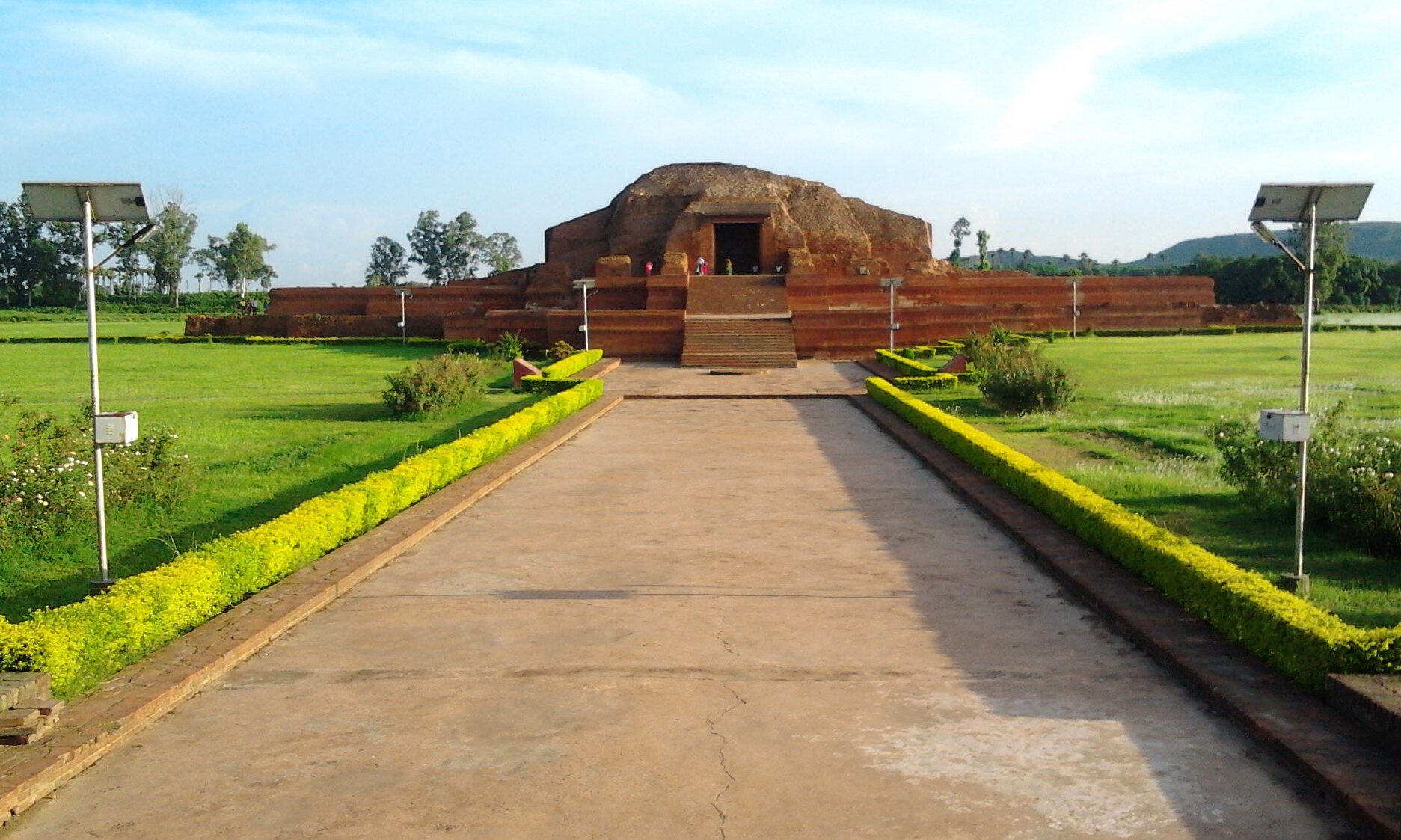The temple of Baidyanath faces the east and is a plain tone structure with a pyramidal tower, which rises from a square base to a height of 72 feet from the ground. To the east of the northern verandah of the temple there is a. large vat into which flows the water and milk offered as ablution.
The lingam is of a cylindrical forming about 5 inches in diameter and projects about 4 inches from the centre of a large slab of basalt. It is not possible to ascertain how much of the lingam is buried. The top is broken and has uneven surface and the fracture is attributed lo the Story already mentioned.
There are different porches in the temple. One porch leads to the cell where the lingam is fixed. The second porch is in front with a row of pillars spanned by blocks of basalt and on the right side there is a sandstone image of a bull. There are bells fixed in the ceiling and pilgrims are supposed to pull the bell-ropes to announce their approach to the d…



















